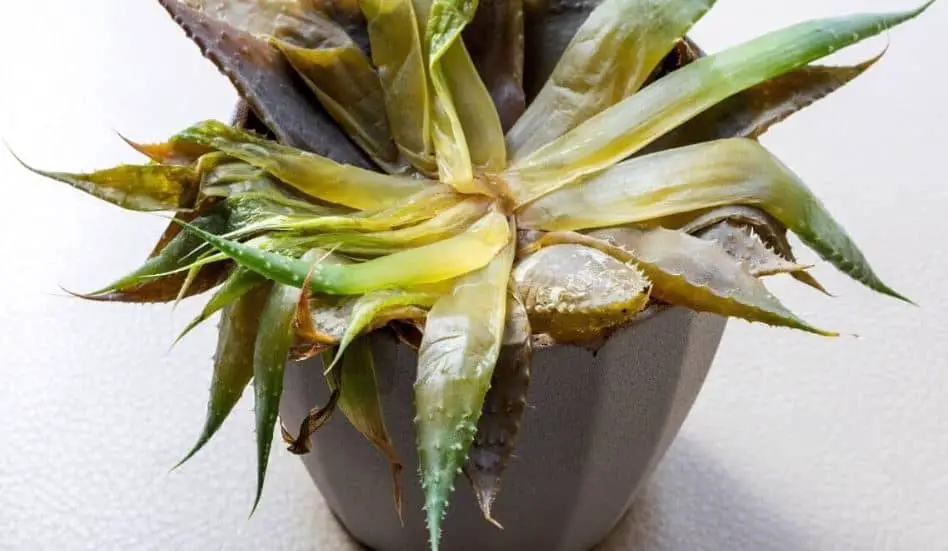Aloe vera plants are among the most popular succulents for gardeners and houseplants growers. The ongoing development of new decorative cultivars shows its increasing acceptance as a houseplant. Aloe has long been hailed for its alleged health advantages and its distinctive attractiveness, making it a wonderful option for container gardening inside. When potted specimens exhibit distress symptoms, it is understandable why producers would get concerned.
Understanding the requirements of the aloe plant and typical aloe vera ailments and pests will assist in more accurately pinpointing the potential source of the issue. We’ll look at a few of the most typical reasons why an aloe vera plant could have perished below.

Do I Have a Dead Aloe Plant?
Any house plant might experience rapid changes in appearance, which can be worrying. We may question whether an aloe plant has perished when it swiftly changes from green to brown. Fortunately, most aloes are resilient enough to bounce back quickly from neglect. However, pinpointing what may have contributed to the plant’s problems requires some investigation.
Most of the time, poor growth circumstances are probably to blame for these variations in appearance. This implies that you should first ensure the plant’s demands are being addressed adequately.
Best Conditions for Aloe Plants to Grow
Bright indirect sunshine is necessary for aloe plants. Those who are exposed to too much sun risk becoming brown. Rapid temperature changes may also be harmful and result in a visible deterioration in the health of the plant’s leaves.
Variable moisture levels are particularly dangerous for succulent plants like aloe. Overwatering or underwatering may cause aloe vera plants to die back. Aloe plants planted inside will still need frequent watering, even if they are drought-tolerant. To prevent saturated soil, waiting until the soil around the plant has dried fully before adding extra water is ideal. Since this encourages better root development and longer intervals between maintenance, it is recommended to water gently and completely.
Aloe Pests
Another frequent reason why plants may struggle to grow is aloe vera pests and illnesses. One of the insects that may wreak havoc on the plant is the aloe mite. In areas where plants may be cultivated outside, these pests are often recognized to harm plants. In actuality, mites are a major concern for industrial farmers. Mites are tiny insects that need a microscope to see, and they feed on the plant, causing harmful growths to emerge. For the time being, aloe mites cannot be treated with insecticides. It is necessary to remove and kill every sick plant from the garden.
Aloe planted indoors may have problems brought on by insects. Plants that annoying insects visit may become sticky or webbed up. Pests like aphids, mites, and mealy bugs are often linked to these symptoms. Infestations of any of these insects may compromise the health of aloe vera plants. Fortunately, there are several measures to aid producers in fixing the issue. Organic gardeners advise washing leaves with water as one of the best ways to maintain plant health. Additionally, decaying plant waste should be routinely cleaned from pots to prevent the development of an insect invasion habitat.

